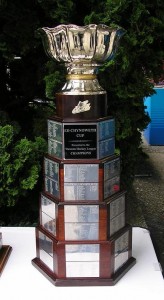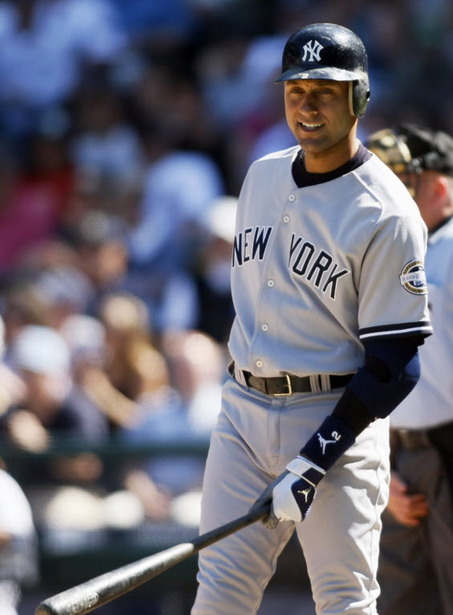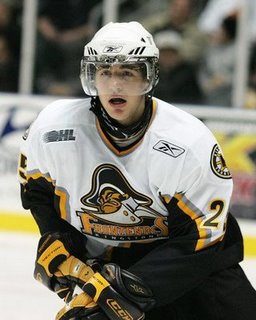Follow Friday – Blog Roll
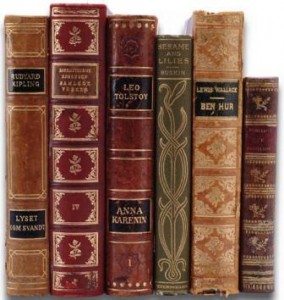
Unfortunately, I could not find an image that combined books and mixed martial arts. You really don't want to Google Image search that either.
In the grand spirit of Twitter’s Follow Friday I figured I’d shed some light on three blogs maintained by close friends.
The Can-Lit Project
Written by my girlfriend Katy and her sister Tory, the Can-Lit project is a series of book reviews and essays about Canadian literature.
It all began when Katy decided that she wasn’t familiar with the Canadian canon, so she and her sister dedicated themselves to reading as many books from this great country of ours as is possible. The result has been intriguing, with both of them exploring classics of the genre as well as some titles that are less popular.
In their eight months of blogging they've put up 43 reviews of Canadian books. Most are fiction, but some are non-fiction.
This may be the Canadian studies graduate in me, but I think this is a very worthy pursuit. In particular, I’ve enjoyed the debates over titles like Life of Pi by Yann Martel. I’ve never read the novel myself, but I miss this kind of heated discussion from undergrad and it makes me want to read the book so I can weigh in as well.
If anything, this blog shames me into being better read and also reading more high quality books. One of my favourite blogs to read and not just for obvious personal reasons.
The Writer’s Pet
Speaking of debates from undergrad, my friend Lija also maintains a literary blog called the Writer’s Pet. Although we used to talk about CanLit in our glory days at the University of Toronto, she’s now moved on to sunny London, England where she continues to toil in the writing game.
Her blog and Twitter feed revolve around literary news and reviews and she occasionally posts interviews with authors like Gavin James Bower, Anna Lawrence Pietroni or Marina Endicott.
It’s a great website to check in on regularly since Lija always has something interesting going on, whether it be a new review or a discussion on unorthodox bookmarks.
Victor Bachmann
My girlfriend’s brother-in-law (the husband of Tory, co-writer of the Can-Lit Project), is a professional mixed martial artist who fights out of Edmonton. He recently started a blog to record his planning and training for a tournament at the end of April that will feature fighters from across Canada in an elimination tournament, much like the original Ultimate Fighting Championship.
There’s only a few posts so far, but that handful has been enlightening. Victor’s talked about his entrance into the sport, his experience fighting at The Fight Club 10: High Octane and coming up with a strategy for his next bout.
It’s a good read for anyone interested in seeing what it takes to be a high-calibre professional athlete or for any fans of MMA.
The World Cup should be watched with a grain of salt
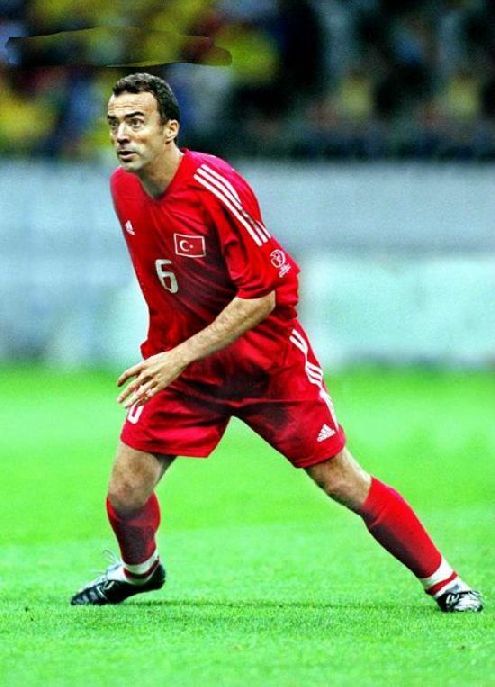
Turkey's Arif Erdem, shown here during his playing days for the national team, was arrested two weeks ago for his alleged involvement in match-fixing.
Although the playoffs (hockey and/or basketball, take your pick) still sit between us and the summer, the Canadian Broadcasting Corporation has already begun to promote their coverage of this year’s World Cup of Soccer in South Africa.
There’s a growing an air of excitement surrounding the tournament. After all, it’s the biggest sporting event in the world, even more popular than the Olympics.
Unfortunately, this time around I’m going to be watching the World Cup with a pretty sceptical eye.
My disillusionment began in Dec. 2008 as I read Declan Hill’s The Fix, an investigation into the world of sports fixing by a journalist who used to work with the CBC and the British Broadcasting Corporation.
I reviewed the book on my now defunct blog, but in short: Hill uncovered a far-reaching criminal underworld that exerts its influence over many sporting events. Hill chose to focus his investigation on soccer matches and his findings were startling.
According to him, there are two kinds of match-fixing scenarios.
1) Internal – When a member of a team gives incentives to officials or the players on opposing clubs to give his team an advantage.
Author Joe McGinniss details this kind of fix in The Miracle of Castel Di Sangro when he overhears several players discussing throwing their final game of the season against Bari. They had been asked to do this “favour” to insure that Bari would be promoted to Serie A.
2) External – When an outsider influences the outcome of a match for personal gain.
Obviously, this is the more typical kind of sporting corruption, with the Black Sox scandal, when the Chicago White Sox threw the 1919 World Series at the behest of Arnold Rothstein, serving as a sterling example.
In The Fix, Hill uncovers evidence of many professional matches being thrown world-wide. The climax of the book is when a mobster assures him that the World Cup itself is fixed. The gangster predicts the results of a handful of matches, down to when the goals are scored.
Hill watches with growing horror as each one of the games ends just as described.
Why is this pertinent now? Because last November German police arrested 15 people for fixing more than 200 games. Two weeks ago, Turkish police detained 40 people, including former international Arif Erdem, for their involvement in thrown matches.
Germany’s Bundesliga and Turkey’s Süper Lig are not the best professional soccer league’s in the world, but they are hardly fly-by-night organizations. In fact, the German national team is one of the best sides in the world and a contender for the 2010 World Cup.
With all this in mind, it will be hard to not be cynical when one of the favourites struggles against an opponent this summer. I simply can’t help but be a little jaded after reading The Fix and hearing about recent events in European soccer.
Major League Baseball needs to adjust its clocks
Although I’m just 26-years-old there are times when I feel old and curmudgeonly. Recently, my complaints have been directed at Major League Baseball’s handling of “event” games, whether they are the World Series, the World Baseball Classic, the All-Star Game or Opening Day.
All of these rather significant baseball games start way too late, they’re filled with time-consuming theatrics and the play itself seems to move at an incredibly slow pace. It makes me feel like an old crank shaking his walking cane at those damn kids who won’t get off my lawn.
However, NorthJersey.com reported Thursday morning that at least two MLB umpires - Joe West and Angel Hernandez – agree with me.
The two officials are members of the crew that have been calling the opening series between the Boston Red Sox and New York Yankees.
“They’re the two clubs that don't try to pick up the pace,” said West in the article. He is the chief of the umpiring crew and was behind home plate on Sunday. “They’re two of the best teams in baseball. Why are they playing the slowest?”
“It’s pathetic and embarrassing. They take too long to play.”
Amen, Joe West. Amen.
Hernandez refused three requests for timeouts during Tuesday night’s game. New York’s Derek Jeter, Marcus Thames and Boston's David Ortiz were all denied a pause from the ‘action’.
Despite West and Hernandez’s efforts to quicken their glacial pace, the Yankees and Red Sox first two games clocked in at 3 hours and 46 minutes and 3 hours and 48 minutes.
Maybe baseball players don’t have to work the next morning, but most people do. How is baseball supposed to cultivate a new audience of young fans when any responsible parent would be sending their kids to bed hours before these games lumber to an end? How are the paying customers expected to sit through nearly four hours of slow play?
Commissioner Bud Selig must find a way to curb these seemingly interminable games. Broadcasters must be haemorrhaging viewers with these lengthy match-ups and in the long run it’s going to shrink baseball’s market share.
Selig should move the time of the game up. Both games in the New York-Boston series were slated to start at 8 p.m. Eastern Daylight Time. How about moving the opening pitch up to 7 p.m.? At least that way the game will end on the same day, barring extra innings.
That’s another thing – when I say “opening pitch”, I do mean the first throw of the game. Not a fly over by the Air Force, the unfurling of a gigantic flag in the outfield or a performance by Jay-Z and Alicia Keys. If you must have all that pageantry, start it at 6 p.m. with the game itself beginning an hour later.
I know that this would effectively cut the West Coast off, but does Selig really want to be developing Yankee and Red Sox fans in California? Shouldn’t they be cheering for the five teams they already have?
Also, the most important part of any sporting event is the final result, and the Pacific Time Zone won’t be robbed of that. A Californian baseball fan who gets off work at 5 p.m. would only be missing the first half of the game.
Major League Baseball is famous for being slow to adapt to change, but enforcing a more reasonable time frame for their games is a pressing concern that Bud Selig should address sooner rather than later. After all, the clock is ticking.
The Case for Pat Burns’ early induction into the Hall of Fame
 A week ago I tweeted about the movement to have Pat Burns inducted into the Hockey Hall of Fame. I had wanted to expand on that 140-character missive, but the Easter holidays got in the way. However, now I’ve got the chance.
A week ago I tweeted about the movement to have Pat Burns inducted into the Hockey Hall of Fame. I had wanted to expand on that 140-character missive, but the Easter holidays got in the way. However, now I’ve got the chance.
As TSN later reported, the Facebook group Let's Get Pat Burns into the Hockey Hall of Fame - NOW! has the support of tens of thousands of hockey fans - over 49,000 as I write this – to put the former National Hockey League coach into the Hall of Fame before he succumbs to terminal cancer.
Other media outlets have picked up on the page, including Hockey Night in Canada, Coast to Coast with Don Cherry, the Montreal Gazette, the Toronto Sun, the Toronto Star and several radio stations.
Burns has a wealth of accomplishments that should earn him a spot in the Hall of Fame.
In his 14 straight seasons as a head coach he won 501 games with four teams, making it to the playoffs 11 times, the final twice and winning the Stanley Cup once.
To put that in a historical perspective, Burns is 11th in NHL history for number of games coached, nine behind Brian Sutter.
Burns is also 11th on the list for coaching wins, just one behind Hall of Fame member Glen Sather.
Even his losses stack up well, with Burns dropping 353 decisions in regulation and 14 in overtime (OTL was only counted in his last four seasons). That’s significantly less than Jacques Demers (468) and Brian Sutter (437), both of whom also coached for 14 years.
Granted, Burns doesn’t come anywhere close to the top 10 in terms of Stanley Cup wins, but he does at least have that one Stanley Cup ring from the 2002-03 New Jersey Devil’s championship, which is better than many other members of the Hall of Fame.
One could speculate that had it not been for Burns’ premature retirement, he’d have moved even further up these lists. Certainly, he could have moved up on the lists for games coached, and presumably climbed further up in terms of wins.
However, the Hall of Fame shouldn’t rely upon conjecture or presumptions. The man’s record speaks for itself. Even within the constraints of his shortened career he put together an exceptional coaching record.
The only question is whether or not Burns will be alive by the time he is inducted into the Hall of Fame.
Burns was present at the groundbreaking ceremony of a hockey arena that will be named in his honour two weeks ago. During the press conference, Burns was not optimistic about his chances of seeing the rink completed.
"I probably won't see the project to the end," said Burns. "But let's hope I'm looking down on it and see a young Wayne Gretzky or Mario Lemieux."
Normally, there is a three-year waiting period after retirement to gain admission to the Hockey Hall of Fame.
However, there is precedent for the Hockey Hall of Fame speeding the process up: Roger Neilson was fast-tracked as he was terminally ill, as was Mario Lemieux, whose Hodgkin's lymphoma appeared to be fatal.
Burns has everything going for him. He has a high-calibre resume, the support of many hockey insiders and the Hall of Fame has done this kind of promotion before.
All that’s left is for the selection committee to take note of his accomplishments and the groundswell of support for his induction. It would be a fitting cap to a stellar career and an inspiring life.
If you’d like to throw your support behind the Let's Get Pat Burns into the Hockey Hall of Fame - NOW! Facebook group, you can join by clicking on this link.
My weekend in junior hockey April 2-4
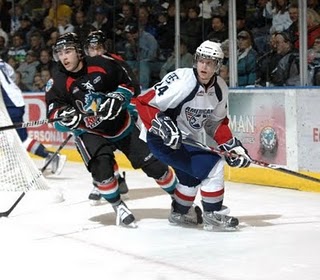 Generally, things are unfolding as they should in the second round of the Canadian Hockey League playoffs.
Generally, things are unfolding as they should in the second round of the Canadian Hockey League playoffs.
By and large, the favourites are dominating. The Quebec Major Junior Hockey League is a perfect example of this: the Victoriaville Tigres are out to a 3-0 lead in their series with the Quebec Remparts, while the Saint John Sea Dogs, Moncton Wildcats and Drummondville Voltigeurs are all up 2-0.
Not surprisingly, the Windsor Spitfires and Barrie Colts are continuing their dominance in the Ontario Hockey League, quickly establishing 3-0 leads in their match-ups. The Ottawa 67’s are up on the Mississauga St. Michael’s Majors 2-1. The London Knights have a similar lead over the Kitchener Rangers.
The Western Hockey League is no different: the Vancouver Giants, Brandon Wheat Kings and Calgary Hitmen all have solid 2-0 leads.
No, there is only one team that has been a disappointment this post-season: the Tri-City Americans.
Although Tri-City finished the regular season at the top of the Western Conference’s standings, they really stumbled to the end of the year, going 5-5 in their final 10 games.
If it wasn’t for the Spokane Chiefs beating the Everett Silvertips 3-2 in literally the last game of the WHL season, the Americans would have finished in third in their conference and had a much tougher pairing in the opening round of the playoffs.
Surprisingly, Tri-City struggled in that opening pairing against the Chilliwack Bruins, eking out a 4-2 series win.
The Americans game, at its height, is marked by a balanced approach with and without the puck. Although they had the third-best offence in the league their best scorer, Brendan Shinnimin, was only 14th overall.
Similarly, Tri-City had the least number of penalty minutes (986) in the entire league. A real accomplishment, considering the rough-and-tumble style of the WHL.
That kind of discipline has disappeared in the past month of Americans’ play, and it is hurting their chances of contending for a WHL championship.
Friday, April 2nd 2010
QMJHL – Couturier helps Voltigeurs slip by Rimouski in overtime
Sean Couturier made sure his Drummondville Voltigeurs started their second-round Quebec Major Junior Hockey League playoff match-up on the right foot.
Couturier forced overtime with two minutes left in regulation and then scored the winner 24 seconds into the extra period as the Voltigeurs eked out a 5-4 win over the Rimouski Oceanic on Friday night. (See more...)
OHL- 67's cruise to win over Majors to tie series
Anthony Nigro and the Ottawa 67's made a statement in the second game of their Ontario Hockey League playoff match-up Friday night.
Nigro had two goals and two assists as the 67's crushed the Mississauga St. Michael's Majors 7-2. (See more...)
WHL – Hitmen gain playoff momentum, down Medicine Hat Tigers
Kris Foucault kept the Calgary Hitmen's post-season roll going on Friday night.
Foucault scored twice to lead Calgary to a 5-2 win over the Medicine Hat Tigers in their Western Hockey League Eastern Conference semifinal opener. (See more...)
Saturday, April 3rd 2010
QMJHL – Huberdeau scores twice as Sea Dogs beat Gatineau
The Saint John Sea Dogs are rolling through the Quebec Major Junior Hockey League playoffs and don't seem ready to let up.
Jonathan Huberdeau scored twice as Saint John routed the Gatineau Olympiques 7-2 in the QMJHL quarter-finals Saturday night. (See more...)
WHL – Giants beat out Winterhawks in physical playoff game
The Vancouver Giants and Portland Winterhawks opened their Western Hockey League playoff series with a bang on Saturday night.
Brendan Gallagher had four goals and an assist as the Giants out-paced the Winterhawks 9-6 in an unruly opening to their second round match-up. (See more...)
Sunday, April 4th 2010
OHL – Colts slip by Battalion in OT; take 2-0 series lead
Luke Pither's impeccable sense of timing has the Barrie Colts in control of their Ontario Hockey League Eastern Conference semifinal.
Pither was the overtime hero as the Colts eked out a 3-2 win over the Brampton Battalion in OHL playoff action Sunday afternoon. (See more...)
March Madness: Day 12 – Some valium for the Madness?
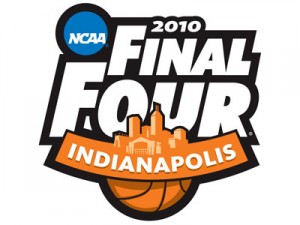 We’re four days away from tip-off of the Final Four in the NCAA’s men’s division I basketball tournament – and my bracket is done.
We’re four days away from tip-off of the Final Four in the NCAA’s men’s division I basketball tournament – and my bracket is done.
Specifically, my bracket ended when the Duke University Blue Devils dropped the Baylor University Bears 78-71 on Sunday night.
I had picked Baylor to move on to the National Semifinal, and having already lost my other Final Four picks - Kansas, Kentucky and Syracuse – to upsets big and small, I was officially shut out.
Miraculously, I finished in a three-way tie for first place.
That’s right, this year’s edition of March Madness has had so many twists and turns that all six of my fellow poolies have been eliminated with three games still remaining in the tournament. Everyone picked Kansas to win, and most had the Jayhawks beating Kentucky in the Final.
As I’ve said in previous posts, my bracket strategy relies heavily on going with the favourites. I don’t know nearly enough about NCAA basketball to offer any kind of dissenting opinion to the experts or competition committee, so I just go with the flow.
Of course, this leaves me wide open for upsets wrecking my chances of victory. In that department, the 2010 tourney has been exceptional.
In fact, 18 of the 60 games so far have seen the lower seed prevail. By comparison, there were a total of 16 upsets in the entire 2009 tournament, including Michigan State (#2) overcoming Connecticut (#1) in the National Semifinal. The year before that, 2008, saw just 13 upsets.
Most surprising is that the only top seed left in the entire tournament is Duke, the team that all the experts had picked for an early exit.
In any event, this has been an incredible tournament, even if my stake in its outcome has been settled well before the whole thing is over.
Book Review: King Leary by Paul Quarrington
 Paul Quarrington’s novel King Leary is a funny, insightful look at the world of professional hockey in the early 20th century that would be enjoyable for fans of the sport or someone looking for a quick read.
Paul Quarrington’s novel King Leary is a funny, insightful look at the world of professional hockey in the early 20th century that would be enjoyable for fans of the sport or someone looking for a quick read.
Published in 1987, Quarrington’s tale won the Stephen Leacock Medal for Humour in 1988 and was shortlisted for that year’s Trillium Book Award.
It regained prominence in 2008 when the Rheostatics' Dave Bidini championed it for the CBC’s Canada Reads program. Bidini’s campaign saw King Leary become a best-seller and win the award 10 years after it first appeared on book shelves.
Narrated by Percival “King” Leary, one of the greatest professional hockey players to ever live, the story follows him as he travels from his retirement home to Toronto to shoot a ginger ale commercial with Duane Killebrew, the National Hockey League’s current scoring champion.
During the trip Leary recalls how he learned to play while at reformatory school and his complicated friendships with Clay Bors Clinton and Manfred Ozikean. He also touches on the fractious relationships with his sons Clarence and Clifford, as well as his wife Chloe and her sister Jane.
For the reader less familiar with hockey, King Leary will entertain with its amusing anecdotes and poignant moments. Quarrington is a masterful storyteller, subtly hinting at darkness that seeps into an otherwise humorous narrative.
Literary minded hockey fans will appreciate his nods to the major figures in the game’s lore. Quarrington works in several real-life legends of the game like Georges Vezina and Eddie Shore.
At the same time, many of the characters are clearly based off other historical figures. Clinton is a mix of Conn Smythe and Harold Ballard. Killebrew is clearly meant to be Wayne Gretzky, with a passing reference to a player “down in Pittsburgh” that hints at Mario Lemieux.
Leary himself resembles a number of players, especially Toronto Maple Leafs great Francis Michael “King” Clancy.
The one disappointing aspect of the book is that although Quarrington is deft at the characterization of all of the main characters, supporting characters like Leary’s nurse Iain or the advertising executive Claire are painted with an extraordinarily broad brush. Their dialogue seems forced and unnecessarily flamboyant to the point that their characters are a distraction that clutters the page.
Aside from that, King Leary is a fine story. A quick reader could blow through Quarrington’s work in an afternoon, and would enjoy it regardless of their attachment to Canada’s favourite game. Definitely worth picking up.
Forget robins, fantasy baseball is the real sign that spring has arrived
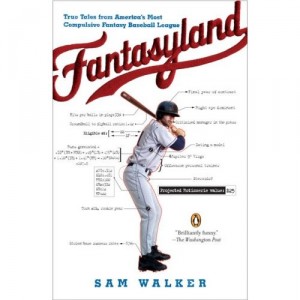 Spring is in the air and so sports fans everywhere are turning their minds to the Boys of Summer, to baseball.
Spring is in the air and so sports fans everywhere are turning their minds to the Boys of Summer, to baseball.
Unfortunately, the Toronto Blue Jays appear to be on the verge of another frustrating season. So I’m focusing on fantasy baseball.
Sure, I still have a seasons pass to all the Jays’ games, but it’s more satisfying to root for teams that I have some measure of control over, teams that won’t have to shed salary or ever let go of Roy Halladay.
Come late August some of my teams should be vying for a playoff spot. I can’t say the same for Toronto.
And I’ve got a lot of opportunities for championships as well – I’m now the commissioner of three leagues, with teams in another three pools.
The breadth and depth of my 2010 fantasy baseball experience will be pretty wide too. I’m in rotisserie leagues, a keeper league, an auction-style draft, an auto-draft as well as some good old fashioned head-to-head scoring.
For anyone who has never participated in fantasy baseball, I highly recommend Sam Walker’s Fantasyland. It’s an excellent introduction to the history and characters of the non-sport.
Walker is the senior special writer and sports columnist for the Wall Street Journal. He decided to give fantasy baseball a try after getting burnt out by the constant allegations of steroid use and exponential growth of salaries in the real-life game.
Taking a sabbatical from his day job, Walker put together a small front office comprised of a NASA statician, a head scout and an astrologer, all in an attempt to best the cream of the fantasy crop in the Tout Wars – a league for the experts who write the websites, magazines and books that the average fan consults.
Spending thousands of dollars on his staff, flights to the Grapefruit League and consulting with the actual players on his team, Walker guides the reader through the world of fantasy baseball.
It’s a really humorous and informative read as Walker takes an unorthodox approach to rekindling his love for America’s pastime.
I’m not as wary of baseball as Walker was, and I’ll never put that much into my fantasy teams. However, I am frustrated with some aspects of baseball, particularly the struggles of my local squad.
Fantasy baseball gives me a forum to follow other corners of Major League Baseball and channel some of my fandom into more fruitful avenues.
For the next two days I’ll be going over fantasy baseball kits and magazines and running mock drafts to try and get a feel for which players I should be taking and when. I’ll be putting together crib sheets and analyzing my opponent’s tendencies.
Opening Day is all about a renewed sense of hope, as all teams start on an equal footing. This year, however, I’ve got seven teams to follow, not just one.
